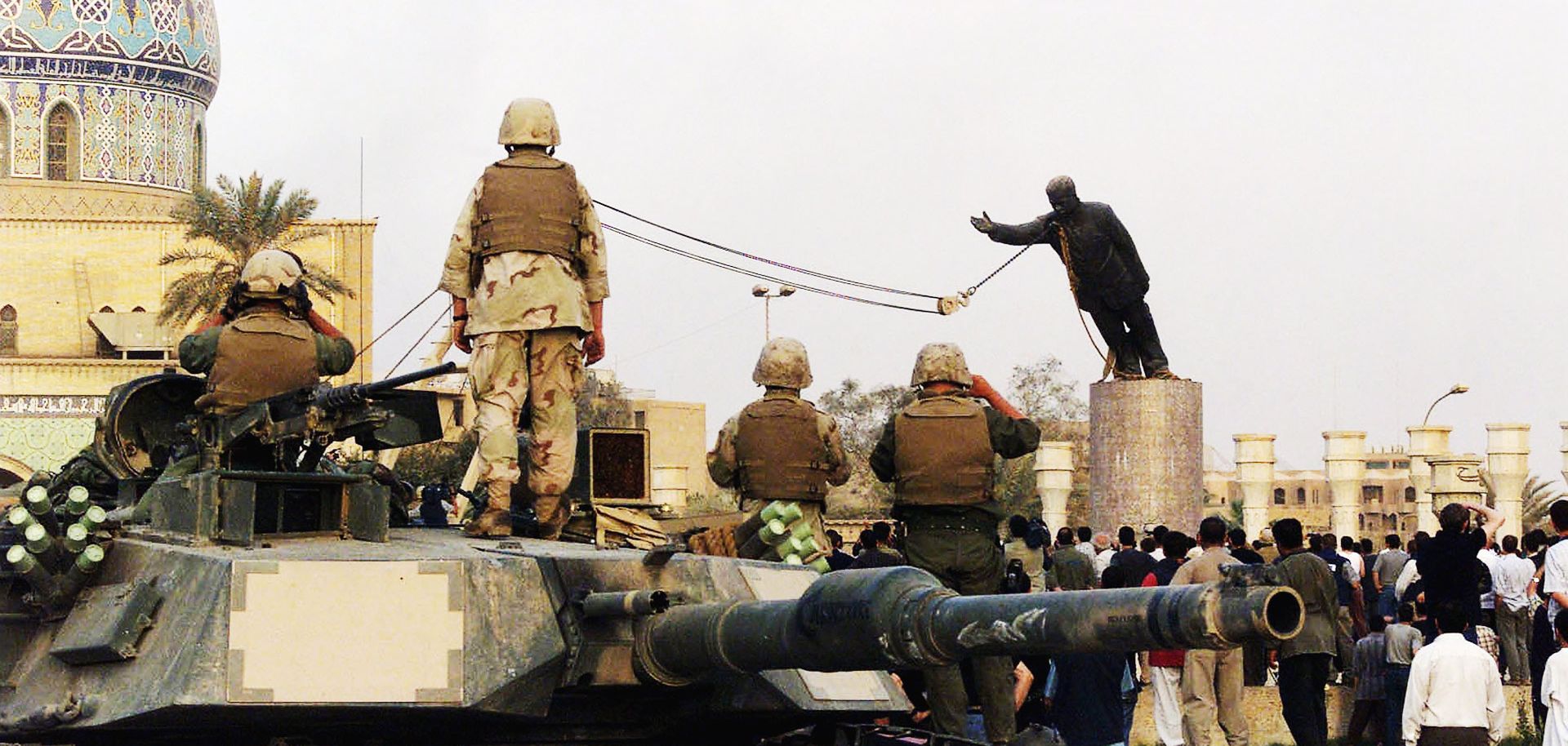GLOBAL PERSPECTIVES
Defining Policy Failure

Feb 10, 2016 | 08:00 GMT

U.S marines and Iraqis are seen on April 9, 2003 as the statue of Iraqi dictator Saddam Hussein is toppled at al-Fardous square in Baghdad, Iraq. The third year anniversary since the overthrow of Saddam Hussein will be marked on April 9, 2006 amidst continued unrest in Iraq, where over 30, 000 civilians have been reported to be killed since the start of the war.
(WATHIQ KHUZAIE/Getty Images)
Subscribe Now
SubscribeAlready have an account?
